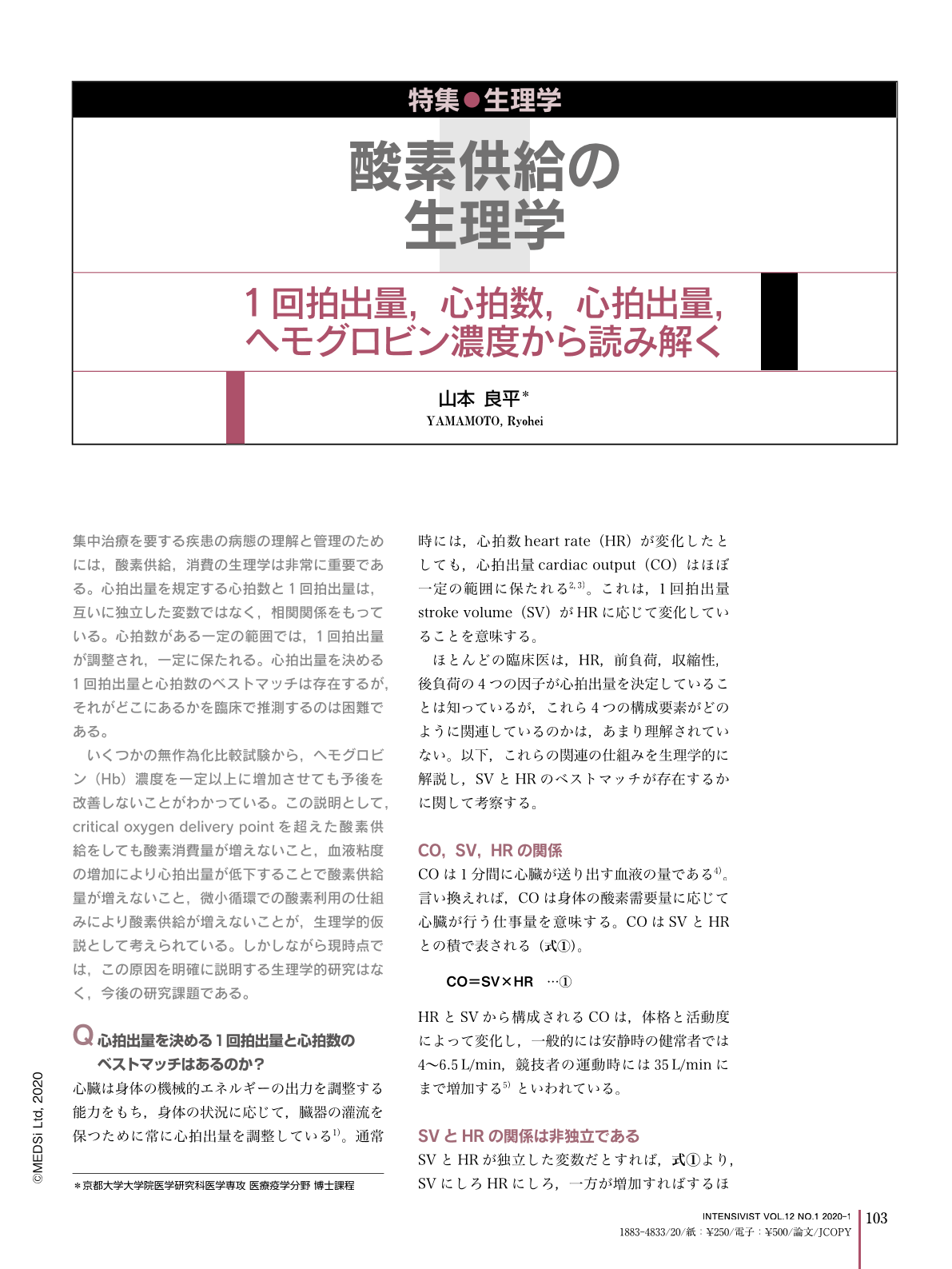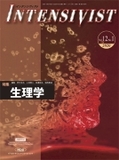Japanese
English
- 有料閲覧
- Abstract 文献概要
- 1ページ目 Look Inside
- 参考文献 Reference
- サイト内被引用 Cited by
集中治療を要する疾患の病態の理解と管理のためには,酸素供給,消費の生理学は非常に重要である。心拍出量を規定する心拍数と1回拍出量は,互いに独立した変数ではなく,相関関係をもっている。心拍数がある一定の範囲では,1回拍出量が調整され,一定に保たれる。心拍出量を決める1回拍出量と心拍数のベストマッチは存在するが,それがどこにあるかを臨床で推測するのは困難である。
いくつかの無作為化比較試験から,ヘモグロビン(Hb)濃度を一定以上に増加させても予後を改善しないことがわかっている。この説明として,critical oxygen delivery pointを超えた酸素供給をしても酸素消費量が増えないこと,血液粘度の増加により心拍出量が低下することで酸素供給量が増えないこと,微小循環での酸素利用の仕組みにより酸素供給が増えないことが,生理学的仮説として考えられている。しかしながら現時点では,この原因を明確に説明する生理学的研究はなく,今後の研究課題である。
The physiology of oxygen delivery and consumption are very important for the understanding and management of critically ill patients. Heart rate and stroke volume, which define the cardiac output, are not independent variables but interact with each other. Within a certain range of heart rate, the stroke volume is adjusted and cardiac output is kept constant. There is a “best match” range between stroke volume and heart rate that determines cardiac output, but it is difficult to estimate where this is in clinical practice. Several randomized controlled trials show that increasing the hemoglobin concentration beyond a certain level does not improve the prognosis. There is some physiological explanation for this. First, oxygen consumption does not increase even when oxygen delivery exceeds the critical oxygen delivery point. Second, cardiac output decreases due to increased blood viscosity. Last, is the mechanism of oxygen utilization in the microcirculation. At present, however, there is little evidence, and this is a topic for future research.

Copyright © 2020, MEDICAL SCIENCES INTERNATIONAL, LTD. All rights reserved.


